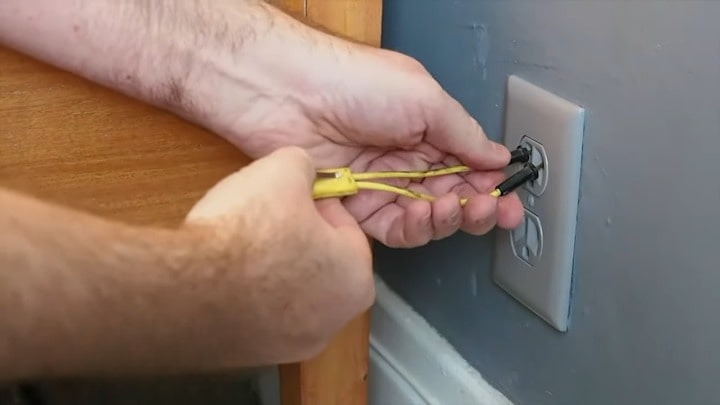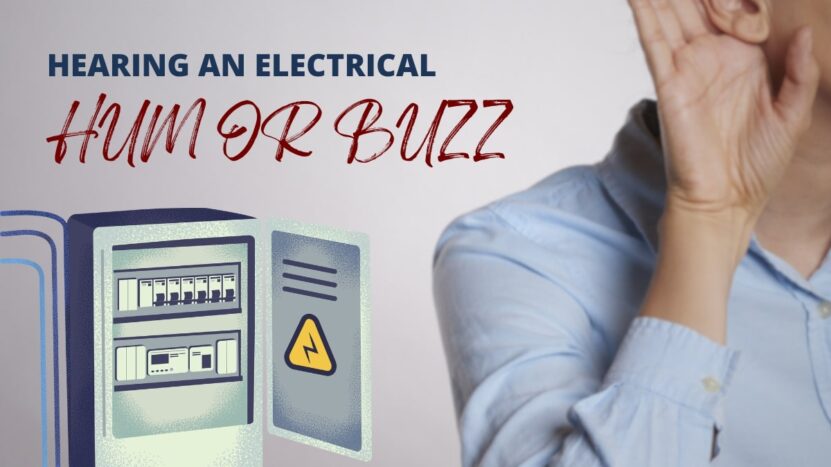Do you sometimes hear an unsettling electrical hum or buzz around your home or office? You’re not alone. These noises can range from mild annoyances to significant distractions, and they can originate from various sources.
In this comprehensive guide, we’ll explore common causes of electrical hums and buzzes, how to troubleshoot the problem, and steps to resolve the issue. By the end, you’ll have the knowledge and tools to silence those pesky noises and restore peace to your environment.
The Basics You Need to Know
Before we dive into the causes and solutions, it’s essential to understand what electrical hum and buzz are. These noises typically result from vibrations or oscillations in electrical circuits or components. They may be continuous or intermittent, and their frequency and volume can vary. Two common types of electrical noise are:
- Hum: A low-frequency, continuous noise, often described as a “droning” sound. It usually occurs at a frequency of 50 or 60 Hz, corresponding to the standard electrical grid frequency in most countries.
- Buzz: A higher frequency, more irregular noise, often characterized by a “crackling” or “sizzling” sound. This type of noise can stem from various sources, including loose connections, faulty components, or interference from other devices.
Common Sources of Electrical Noise
There are numerous potential sources of electrical hums and buzzes in a typical home or office. Some of the most common include:
- Transformers: These devices convert voltage levels, and their internal coils can vibrate and produce a hum. Examples include power adapters, chargers, and certain types of light fixtures.
- Motors: Devices with electric motors, such as fans, air conditioners, and refrigerators, can generate hums due to their moving parts and magnetic fields.
- Dimmer switches: When dimmers adjust the power flow to lights, they can create electrical oscillations that result in buzzing.
- Fluorescent lights: These lights use ballasts to regulate current, and these components can vibrate and create a hum.
- Loose connections: Wires or components that aren’t securely connected can cause arcing, leading to buzzing sounds.
- Faulty components: Damaged or deteriorated parts in electrical devices can create abnormal vibrations or oscillations that produce noise.
Troubleshooting: Identifying the Culprit
To resolve an electrical hum or buzz, you first need to pinpoint its source. Here are some steps to help you identify the offending component or device:
- Listen closely: Walk around the area where the noise is most noticeable, and try to determine its origin. Use a cardboard tube or an empty glass to help focus your hearing and locate the source.
- Isolate devices: Unplug or turn off electrical devices one at a time to see if the noise disappears. Don’t forget to consider less obvious sources, like power strips, surge protectors, or items hidden behind furniture.
- Check connections: Inspect outlets, switches, and wiring for loose or frayed connections. Be sure to turn off power at the breaker before handling any electrical components.
- Test components: Swap out potentially noisy components, such as transformers, motors, or light bulbs, with known good ones to see if the noise persists.
Solutions: How to Fix Electrical Hums and Buzzes

Once you’ve identified the source of the electrical noise, it’s time to address the issue. Here are some solutions for common causes of hums and buzzes:
- Transformers: If a power adapter or charger is causing the hum, consider replacing it with a higher-quality, UL-listed component. Alternatively, you can try moving the transformer further away from sensitive devices or using an extension cord to create distance.
- Motors: For devices with electric motors, lubricating moving parts or tightening loose components may reduce vibrations and noise. If the motor is old or worn out, consider replacing it.
- Dimmer switches: Buzzing from dimmer switches may be reduced by using dimmable LED or CFL bulbs designed for use with dimmers. If the problem persists, consider upgrading to a newer dimmer model with better noise suppression.
- Fluorescent lights: Replace noisy ballasts with high-quality, electronic models that are designed for quieter operation. Consider upgrading to LED lighting, which is more energy-efficient and typically produces less noise.
- Loose connections: Tighten any loose wires or components, and ensure all connections are secure. If you’re not comfortable working with electrical systems, consult a licensed electrician.
- Faulty components: Replace any damaged or deteriorated parts that may be causing the noise. Again, if you’re unsure about handling electrical repairs, consult a professional.
When to Call a Professional
While many electrical hums and buzzes can be resolved with DIY solutions, some situations warrant the expertise of a professional. If you’re unable to identify the noise source, if the problem persists after trying the solutions mentioned above, or if you’re uncomfortable working with electrical systems, it’s best to call a licensed electrician.
They can diagnose and fix the issue safely and efficiently, ensuring your electrical system remains safe and functional.
Preventive Measures and Maintenance Tips
Taking proactive steps to maintain your electrical system and devices can help prevent hums and buzzes from developing in the first place. Here are some preventive measures and maintenance tips to consider:
- Invest in quality components: Opt for high-quality, UL-listed devices, transformers, and light fixtures to minimize the risk of electrical noise.
- Regularly inspect your electrical system: Periodically check outlets, switches, and wiring for signs of wear or damage. Address any issues promptly to prevent further problems.
- Keep devices clean and well-maintained: Regularly clean and lubricate moving parts in devices with motors, and ensure all components are securely fastened.
- Choose compatible devices: When installing dimmer switches, make sure they are compatible with the specific type of light bulbs you plan to use.
- Use noise-reducing accessories: Some products, such as power conditioners or ferrite chokes, can help reduce electrical noise from transformers and other devices.
Final Words
Electrical hums and buzzes can be more than just an annoyance; they may indicate an underlying issue with your electrical system or devices. By understanding the common causes of these noises, taking a systematic approach to troubleshooting, and applying appropriate solutions, you can effectively silence the hums and buzzes in your environment.
Remember, if you’re ever unsure about the source of the noise or how to address it, don’t hesitate to consult a licensed electrician. Taking a proactive approach to maintaining your electrical system and devices will help prevent future problems and keep your environment free of bothersome electrical noise.

